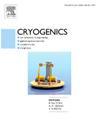船用低温储罐热力学过程模型
IF 2.1
3区 工程技术
Q3 PHYSICS, APPLIED
引用次数: 0
摘要
海运业加速向低碳和零碳能源转型,推动了LNG、氨、氢和二氧化碳等海洋燃料的采用,这些燃料来自碳捕集。这些物质需要低温储存和处理,有复杂的机载系统的储罐,管道和工艺设备。核心是低温储罐,由于外部热量的进入,复杂的汽液平衡决定了船舶运行过程中的蒸发和压力动态。这项工作介绍了低温储罐的通用热力学模型,该模型适用于各种燃料和二氧化碳混合物,并集成了船用低温气体处理系统模型。该模型考虑了多组分汽液平衡、蒸汽过热、环境和相间传热、加载过程中的闪蒸以及通过液滴蒸发进行的喷雾冷却。这些功能可以模拟压力积累、加载/卸载、蒸发管理、内部传输和喷雾冷却过程。通过过程建模框架开发,储罐模型能够与阀门、管道、泵模型接口,并用于多储罐配置。采用已发表的实验数据和实际lng燃料船的测量结果,提出并讨论了一套全面的验证和验证研究,证实了其预测的准确性。最后,通过不同的油罐几何形状、船舶操作和低温物质的模拟,证明了该模型在提供洞察力和支持复杂船舶操作和设计挑战方面的能力。本文章由计算机程序翻译,如有差异,请以英文原文为准。
A cryogenic tank thermodynamic process model for marine applications
The maritime industry’s accelerated transition to low- and zero-carbon energy is driving the adoption of marine fuels such as LNG, ammonia, hydrogen, and CO2 seaborne transport from carbon capture. These substances require cryogenic storage and handling, with complex onboard systems of tanks, piping, and process equipment. At the core is the cryogenic tank, where complex vapour-liquid equilibrium due to external heat ingress determine boil-off and pressure dynamics during ship operations. This work introduces a generic thermodynamic model for cryogenic tanks that accommodates various fuel and CO2 mixtures and integrates with marine cryogenic gas handling system models. The model accounts for multicomponent vapour-liquid equilibrium, vapour superheating, environmental and interphase heat transfer, flash evaporation during loading, and spray cooling via droplet evaporation. These capabilities enable the simulation of pressure accumulation, loading/unloading, boil-off management, internal transfers, and spray cooling processes. Developed through a process modelling framework, the tank model is able to interface with models of valves, pipes, pumps, and be used in multi-tank configurations. A comprehensive set of validation and verification studies is presented and discussed using both published experimental data and measurements from an actual LNG-fuelled vessel, confirming its predictive accuracy. Finally, simulations across different tank geometries, ship operations and cryogenic substances demonstrate the model’s ability in providing insight and supporting complex ship operations and design challenges.
求助全文
通过发布文献求助,成功后即可免费获取论文全文。
去求助
来源期刊

Cryogenics
物理-热力学
CiteScore
3.80
自引率
9.50%
发文量
0
审稿时长
2.1 months
期刊介绍:
Cryogenics is the world''s leading journal focusing on all aspects of cryoengineering and cryogenics. Papers published in Cryogenics cover a wide variety of subjects in low temperature engineering and research. Among the areas covered are:
- Applications of superconductivity: magnets, electronics, devices
- Superconductors and their properties
- Properties of materials: metals, alloys, composites, polymers, insulations
- New applications of cryogenic technology to processes, devices, machinery
- Refrigeration and liquefaction technology
- Thermodynamics
- Fluid properties and fluid mechanics
- Heat transfer
- Thermometry and measurement science
- Cryogenics in medicine
- Cryoelectronics
 求助内容:
求助内容: 应助结果提醒方式:
应助结果提醒方式:


